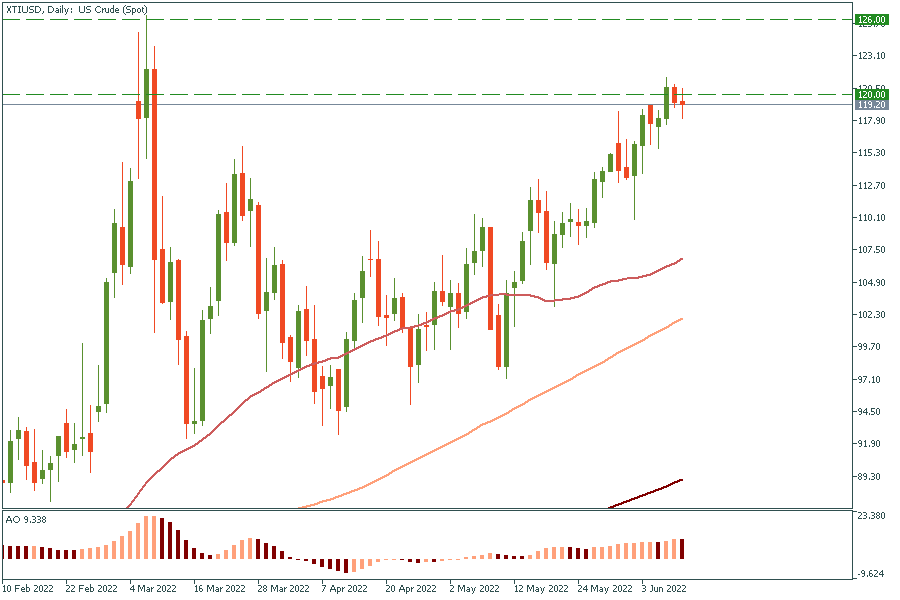Why Didn't Oil Prices Calm Despite OPEC+ Attempts?
After months of pressure from the White House, Saudi Arabia relented and agreed with other OPEC+ members to increase production. The surprise, however, is that prices didn't calm down and remained high.
OPEC+ decided to ramp up production. Members agreed to increase their overall production targets by 650,000 barrels per day in July and August. These increases are an attempt to ease the burning oil prices that threaten the global economic growth and push US gasoline prices to record levels.
Why are oil prices still rising?
1. Once China ends lockdowns and fully reopens its economy, demand for oil will rise, meaning oil prices will rise again.
2. In the US, demand is still strong with the start of the summer driving and travel season, despite record gasoline prices.
3. Demand is increasing while supply and production problems persist. We have Russian barrels leaving the market, OPEC is struggling to produce the required quotas, and the US is unable to increase production.
Can OPEC meet the new increases?
Small OPEC+ countries, in particular, haven't been able to produce their agreed quotas of supplies in recent months, leaving the group's production nearly 2.6 million barrels per day below the target.
The problem is that when OPEC cut production after demand collapsed due to the pandemic, investment fell, and facilities maintenance was also neglected. That made increasing production more difficult since then. And yes, OPEC+ decided to increase production, but the possibility of those barrels reaching the market is low.
OPEC + may succeed in increasing production only by 355,000 barrels per day in the next two months. That will increase pressure on prices, pushing them higher. According to EIA, this slight increase won't be enough to offset the disappearance of 3 million barrels per day of Russian oil from markets soon.
How high will oil need to go to trigger a recession?
There are reasons to believe that if oil reaches the level of $140 a barrel, many regions of the world will plunge into recession.
As a result, both Goldman Sachs and Bank of America predict $140 a barrel for oil prices in the coming months. Moreover, the UAE Energy Minister said that oil prices aren't even near their peak, and the Chinese economy's reopening soon will support oil demand.
What is our view on crude oil prices?
Oil prices are expected to calm down once production increases and the Chinese economy reopens. In the long term, prices will fall to more reasonable levels.
WTI faced minor corrections but remained above $120 levels, and prices may move in a vertical upside move and ease a bit before resuming the rally. The next target will be to break its highest level since the beginning of 2022, over $126.00 a barrel.

If you want to trade oil with FBS, follow these simple steps:
- First of all, be sure you’ve downloaded the FBS Trader app or Metatrader 5.
- Open an account in FBS Trader or the MT5 account in your personal area.
- Start trading!